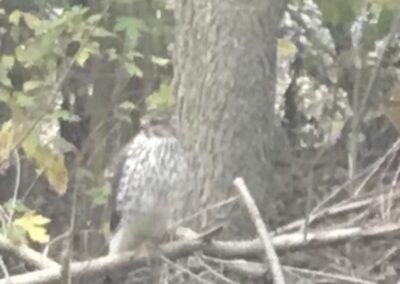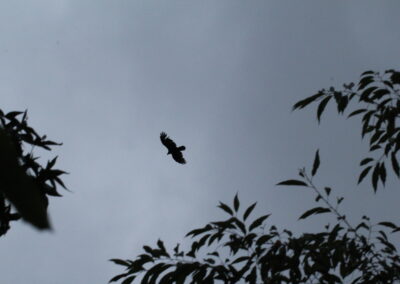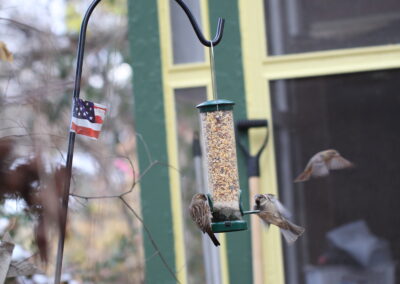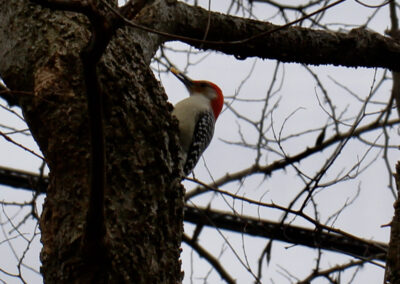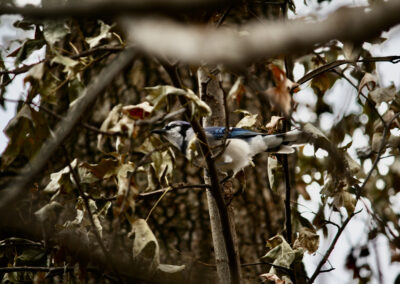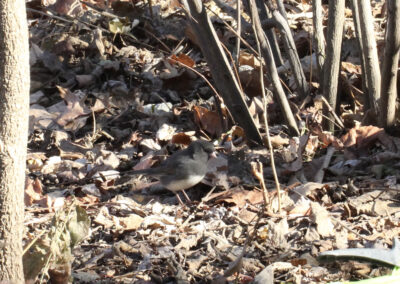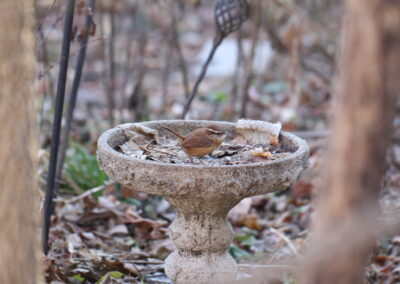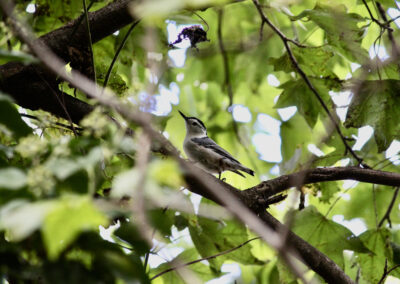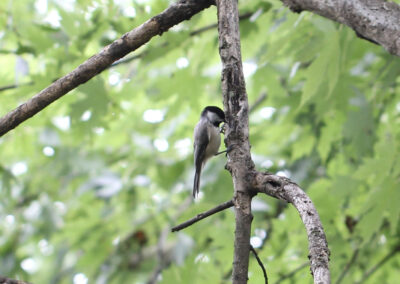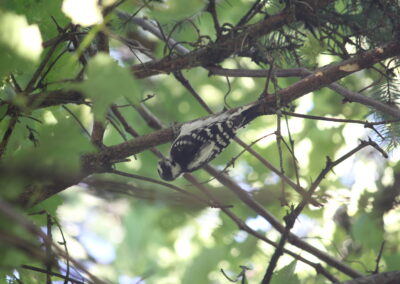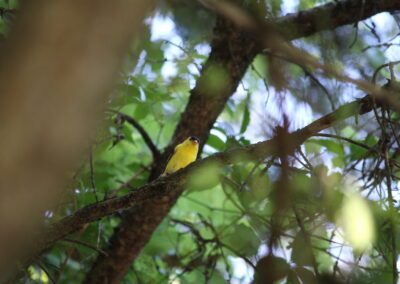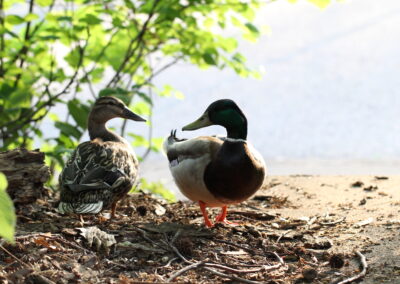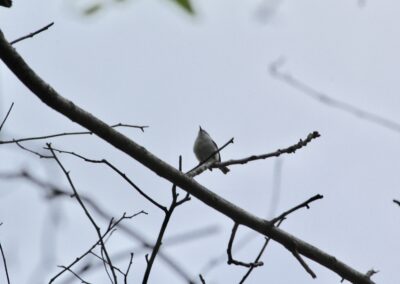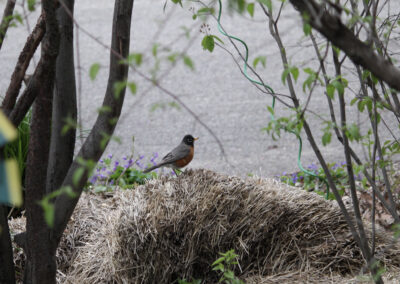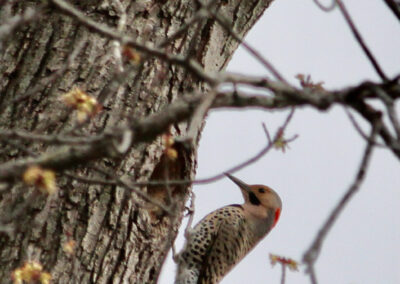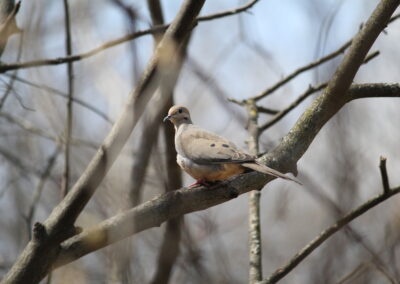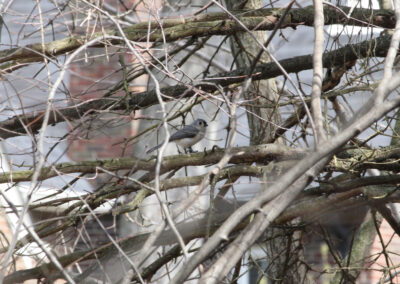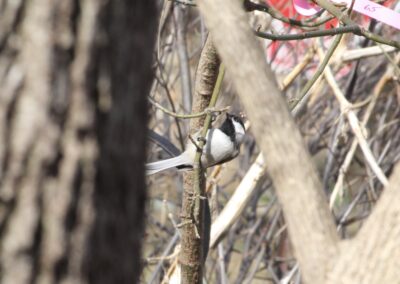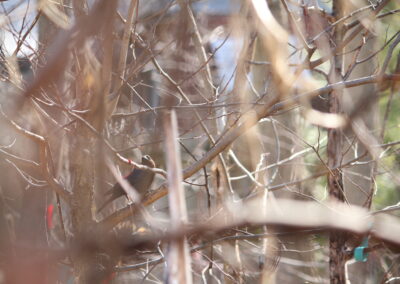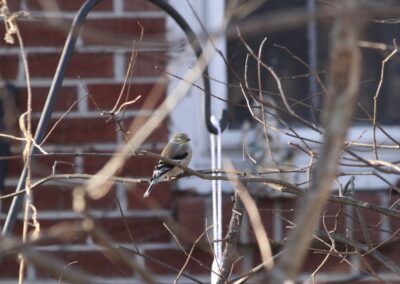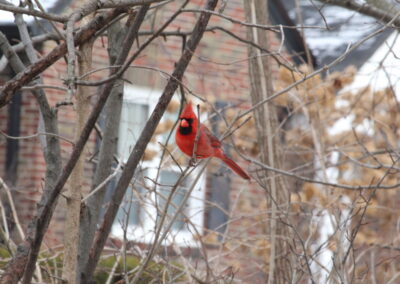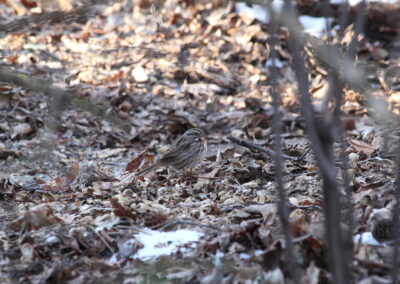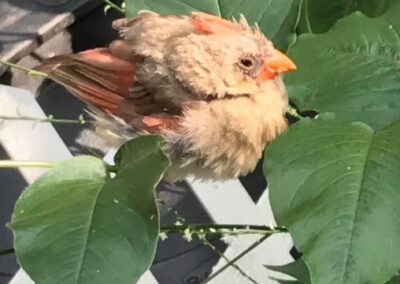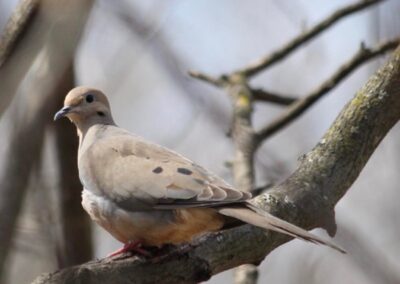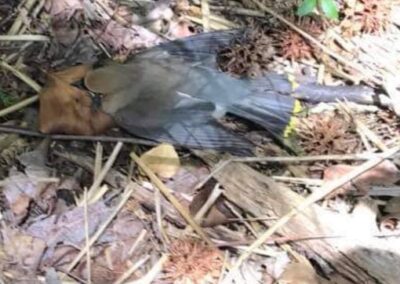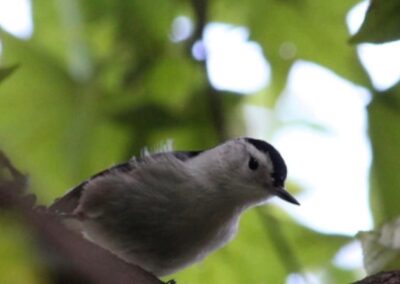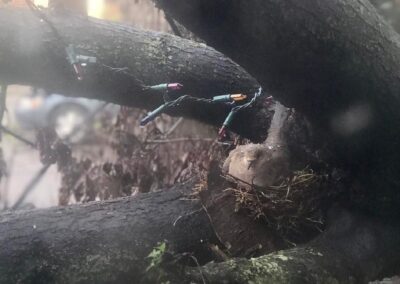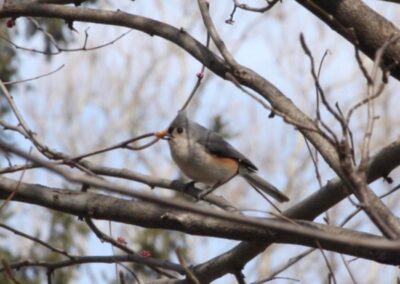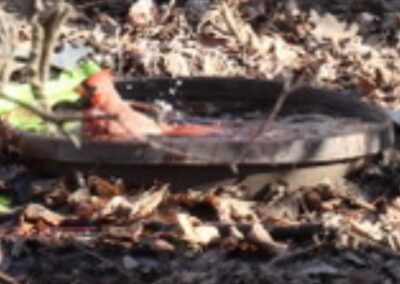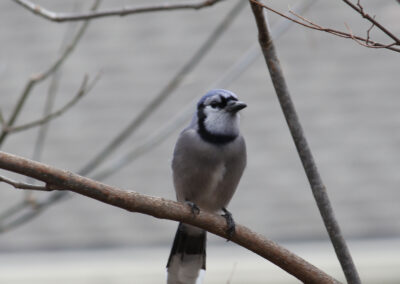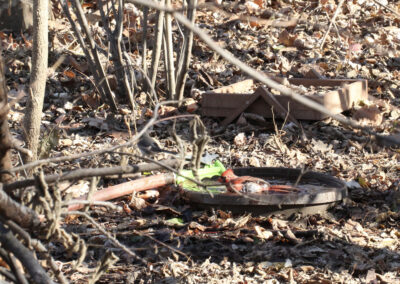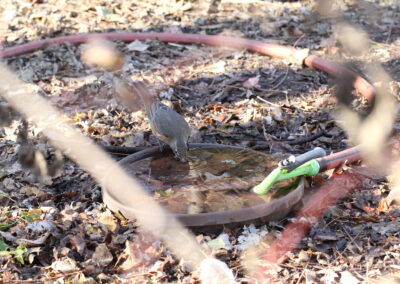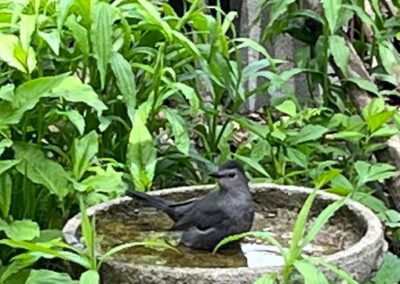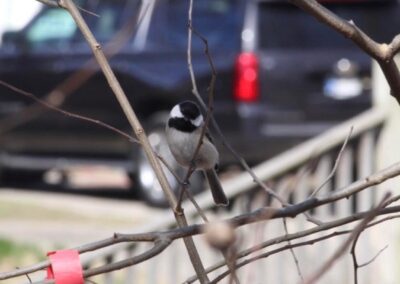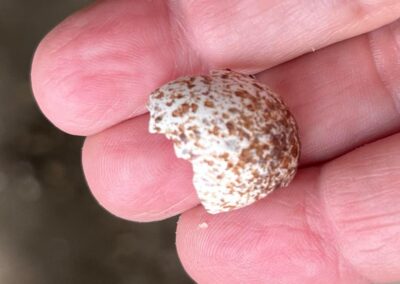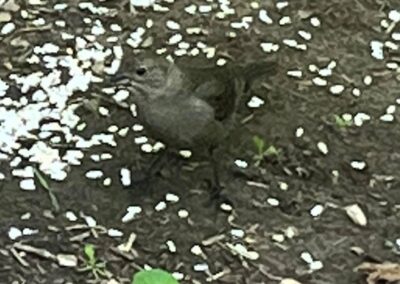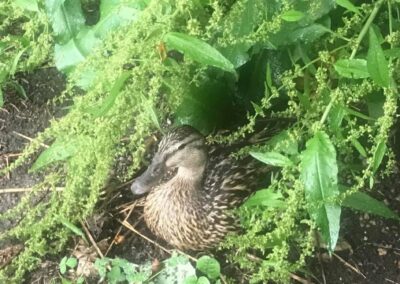BIRDS OF WILDERGARDEN
History of Birds at Wildergarden
When Wildergarden started in 1990, grain and seed bird feeders were the only means of feeding birds, since the yard was grass sod. The most common birds eating sunflower seeds in the feeder were red finches. Yellow finches grazed on field thistle. At that time, the only creatures that had obvious relationships with plants were insects.
An original goal of Wildergarden was to make it possible for any bird flying over Marion County to look down and see ample habitat conveniently located for use.
Within a few years, our founder nicknamed Wildergarden “the airport garden,” because birds were frequently landing and taking off. We have observed that berry-bearing shrubs such as arrowwood viburnum attracted birds, berry-bearing wildflowers such as poke drew catbirds in particular, and small trees such as silky dogwood and juneberry provided essential cover and berries to increase bird populations. Eastern red cedar provided early habitat for cedar waxwings.
The birds we recorded in our journal during our prairie/grassland stage of succession were: Indigo Bunting, Robin, Grackle, Red-tail Hawk, Northern Flicker, Hummingbird, Northern Cardinal, Mourning Dove, Mockingbird, Grey Catbird, House Sparrow, Red Finch, Carolina Chickadee, Blue Jay, Tufted Titmouse, Yellow Finch, Red-bellied Woodpecker.
Since we began succession into forest, and increasing volume of wood and brush piles, we additionally see the following birds: Carolina Wren, Song Sparrow, Dark-eyed Junco, Brown Thrasher, Pileated Woodpecker, Downy Woodpecker, White-breasted Nuthatch, Brown-headed Cowbird, Blue-Gray Knat Catcher, White-throated Sparrow, Yellow-rumped Warbler .
We plan to increase our documentation of bird presence in the future.
With a nearly complete summer tree canopy, visitors to Wildergarden now frequently include three types of woodpeckers: downy, red-bellied, and pileated. Also visiting under current conditions are the birds listed in the section below that were counted during the Great Backyard Bird Count.
In 2023, we began using the Merlin Bird ID phone app to identify bird calls. For example, on March 5, 2023, in two minutes during morning patio time, the Merlin app recorded the following birds: northern cardinal, house sparrow, downy woodpecker, red-bellied woodpecker, Carolina wren, Carolina Chickadee, and American Robin.
Having such a wide variety of bird visitors companions at one time is a testament to the success Wildergarden is having in building an attractive and complete habitat!
We want to do more bird studies to document the use of habitat, using non-intrusive methods. Participating in the Great American Bird Count as the inaugural Wildergarden event is just the beginning!
Passerine Birds
If you notice in our photos, birds use their talons to wrap around a branch for perching. This is the unique characteristic of passerine birds. The majority of Wildergarden birds are passerine, and many of them are songbirds. An exception are the mallard ducks.
Great Backyard Bird Count
On February 18th and 19th 2023, visitors gathered at the Wildergarden to take part in a global event: The Great Backyard Bird Count. For four consecutive days every year, people from all over the world observe birds and submit the data to the ebird database. This year, the Wildergarden hosted a bird count as its inaugural event. Over a total of 70 minutes in the Wildergarden, 7 people confidently recorded 79 different birds from 15 different species. Here’s the tally:
Red-bellied Woodpecker: 1
Downy Woodpecker: 3
Carolina Chickadee: 1
Carolina Wren: 1
European Starling: 3
House Sparrow: 46
House Finch: 3
American Goldfinch: 4
Dark-eyed Junco: 1
Song Sparrow: 1
Northern Cardinal: 7
American Crow: 3
Tufted Titmouse: 2
American Robin: 2
Accipiter Sp. : 1
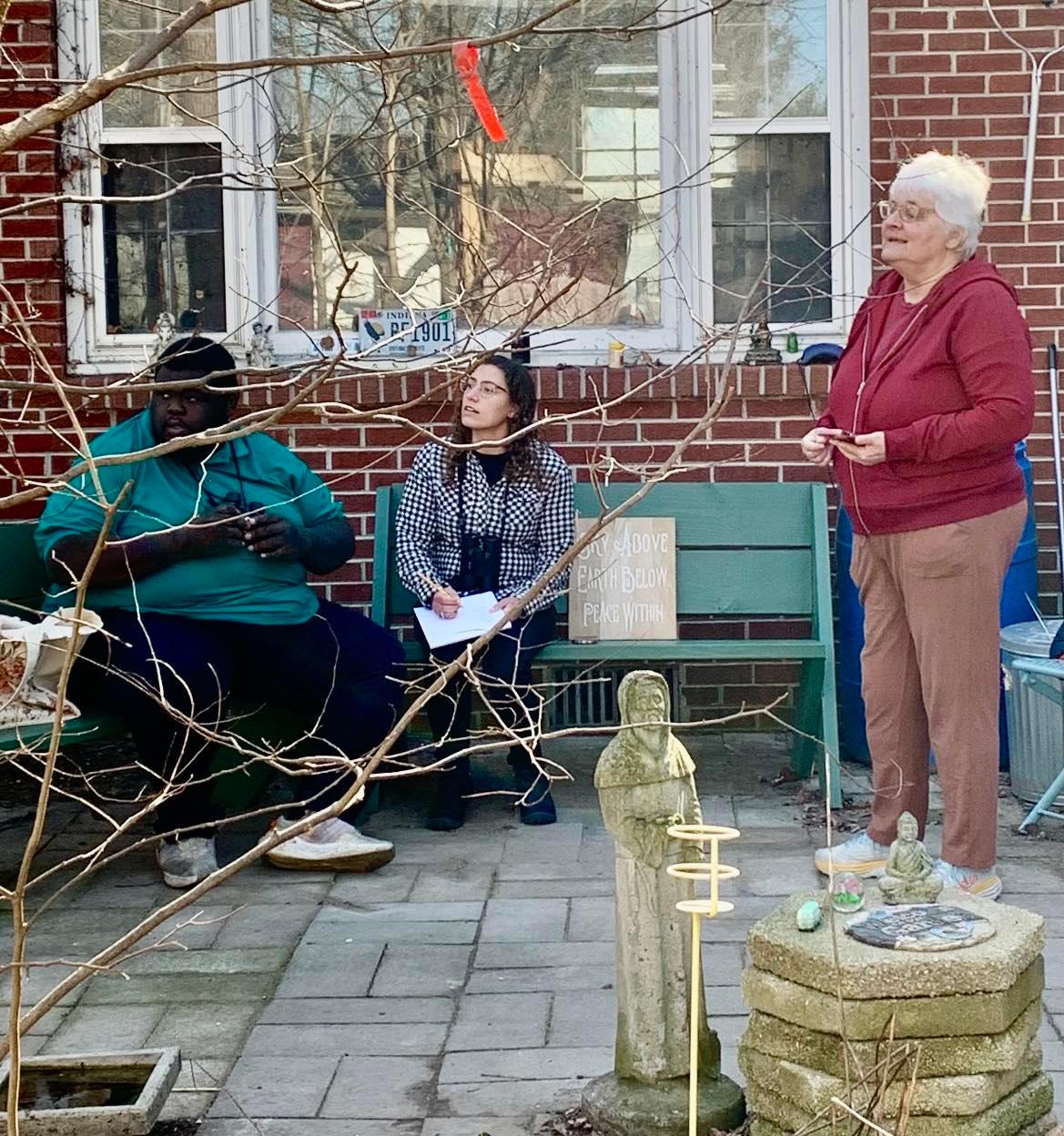
These are some of the birds spotted at Wildergarden during the year:
Downy Woodpecker
Notice the white outer tail feathers with black bars. This is a diagnostic feature to differentiate between downy and hairy woodpeckers (hairy woodpeckers have white outer tail feathers with no black bars).

